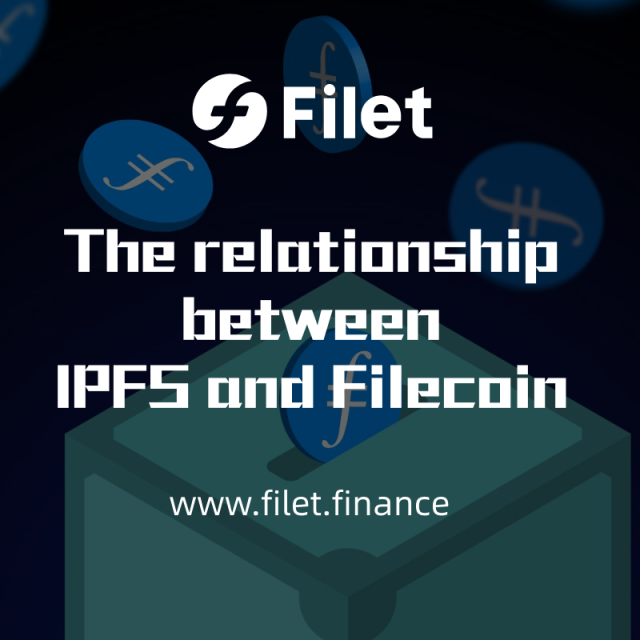With the internet evolving to Web 3.0, there is now a need for a decentralized file storage system. And IPFS and Filecoin are complementary protocols for storing and sharing data in the distributed web and the advanced innovation of the Web3 paradigm. Both IPFS and Filecoin are free and open source. They offer an essential foundation for this new iteration of the internet.
What is IPFS?
IPFS or InterPlanetary File System is an open-source, peer-to-peer network for storing and accessing files, data, websites, and applications in a distributed file system. IPFS is like Torrent but leverages a single global peer-to-peer network. It is designed to be a more efficient and secure way to share files, as it allows users to access files directly from other users on the network rather than going through a centralized server. This makes it resistant to censorship and allows for faster access to files. It can be regarded as a peer-to-peer version of HTTP. Still, instead of using specific geo-location on a server to identify a file, IPFS uses content addressing to store data decentrally.
It is created by Protocol Labs, which is also the one behind Filecoin, a peer-to-peer version of AWS that regularly verifies data availability and integrity.
Is IPFS free?
It is free and open-source for anyone to use. It is supported by a global community of developers and users who contribute to the development and maintenance of the system. As a decentralized network, there are no fees associated with using IPFS to store or share files. You can run a code, upload, and pin any files on IPFS for free. However, if your node stops working, then there’s no guarantee that your files will still be accessible. To avoid this, your files need to be pinned by others. You can also pay for commercial pinning services to pin your files so that you don’t have to worry about downtime. And, if you want to store large amounts of data on the network and your computer do not have enough space, you may need to purchase additional storage from providers who offer it.
What is Filecoin?
Filecoin is built on top of the IPFS, which serves as the Filecoin Network’s distributed data storage and sharing layer. It is a blockchain-based system that allows users to buy and sell storage on the network, providing a market-based solution for decentralized file storage. Filecoin uses a cryptocurrency of the same name to facilitate transactions on the network and incentivize users to provide storage. It is designed to be a more efficient and cost-effective alternative to traditional cloud storage solutions.
Filecoin’s consensus mechanisms, “proof of replication” (PoRep) and ”proof of spacetime” (PoST) verify storage data and play critical roles in removing third parties.
IPFS vs. Filecoin
IPFS and Filecoin are related technologies, but they serve different purposes. IPFS is a decentralized, peer-to-peer file sharing protocol that allows users to store and access files directly from other users on the network. Filecoin, on the other hand, is a decentralized storage network that uses the IPFS protocol to store files. It is a blockchain-based system that uses a cryptocurrency to facilitate transactions and incentivize users to provide storage. Filecoin provides a market-based solution for decentralized storage, allowing users to buy and sell storage on the network. While IPFS is a core component of the Filecoin network, they are not the same thing and serve different purposes. Both IPFS and Filecoin are separable and can be used independently without requiring one another. To help them work together, the ecosystem has developed tools like Textile and Estuary.
There are many advantages of using IPFS, including faster data loads and allowing creators to distribute their work without any cost because no servers are required. It further allows users in a local network to communicate with each other, even if the Wide Area network is blocked.
In addition, IPFS makes it possible to efficiently distribute high volumes of data without duplication and enables persistent availability. Files stored using IPFS are also automatically versioned.
While decentralized storage is still in its early days, the Filecoin ecosystem has been thriving these past few years. Both IPFS and Filecoin are being leveraged by a wide range of use cases, including NFTs, Web3, gaming, metaverse, and audio/video.
Already, Brave browser, virtual reality platform Decentraland, and video hosting platform DTube along with Blust.tv, Killcord, Qri, Berty.tech, and KODA are seizing the opportunity of IPFS.
IPFS is an ambitious vision of a new decentralized Internet infrastructure, and the adoption of decentralized storage solutions may further open the door to new applications.
Mining and Staking FIL
When it comes to Filecoin, as an economic incentive layer to the IPFS, clients pay in Filecoin’s native token FIL to store data on the network. Storage providers, meanwhile, earn payments and rewards by continuously storing data and cryptographically proving it.
FIL is currently down about 92% from its all-time high set in April 2021. For users, who invested in the FIL tokens and are still holding them, there are several options available in the market. The one leading the race is Filet Finance.
We offer FIL token holders risk-free and high-growth FIL staking services. Both speculators and conservative investors can take advantage of this product to earn passive income, build their FIL investment portfolio, and be prepared for the next bull run.
As a Filecoin mining power tokenization protocol deployed on the Filecoin, BSC, HECO, and Mixin network, another advantage of using the Filet platform is a low cost of entry to Filecoin mining. Instead of requiring heavy initial capital and technical understanding to traditionally mine FIL, Filet allows you to start mining FIL by staking your FIL tokens.
